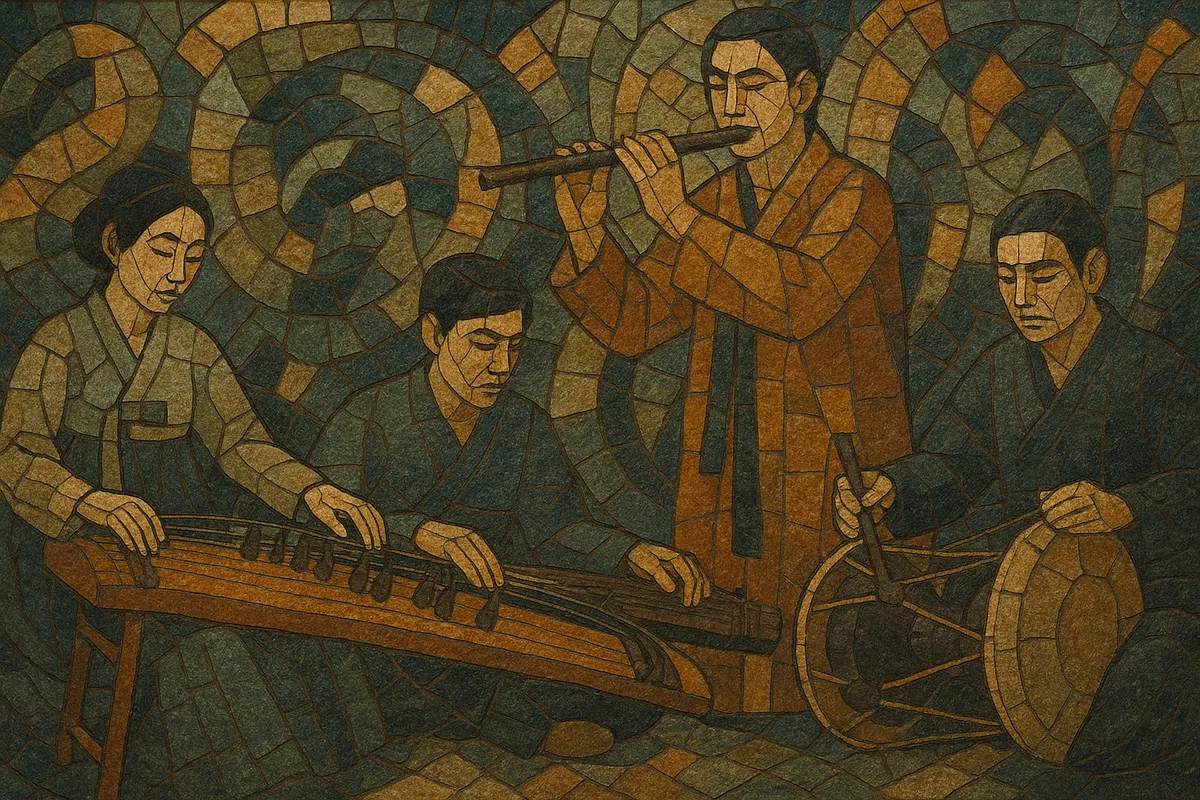
Changjak gugak (창작국악, “creative national music”) is a modern compositional approach that creates new works using the instruments, modes, ornaments, and rhythmic cycles of Korean traditional music (gugak). Rather than simply reviving old repertoires, it extends them with contemporary forms, large-ensemble writing, and modern techniques.
Typical instrumentation includes gayageum, geomungo, haegeum, daegeum, piri, ajaeng, various percussion (janggu, buk, jing, kkwaenggwari), and sometimes saenghwang and yanggeum. Composers often employ traditional modes (pyeongjo, gyemyeonjo), characteristic ornamentation (sigimsae/nonghyeon), and cyclic jangdan (e.g., jinyangjo, jungmori, jajinmori, gutgeori), while integrating ideas from modern and contemporary classical music.
The result ranges from meditative chamber textures to full "gugak orchestra" works that explore heterophony, timbral color, and new formal designs, positioning changjak gugak as a bridge between heritage practice and present-day art music.
Following the Korean War, musicians and scholars sought ways to sustain tradition while speaking to contemporary audiences. The term changjak gugak took hold as composers began writing new pieces for traditional instruments and voices instead of only performing canonical repertoires. Early landmark figures shaped idiomatic modern pieces for gayageum, geomungo, winds, and percussion that retained gugak’s modal language and ornamentation.
The growth of state and municipal ensembles, including the National Orchestra of Korea and metropolitan traditional music orchestras, provided a platform for premieres and commissions. Composers standardized notation, expanded orchestrational roles for instruments like haegeum and piri, and experimented with larger forms, programmatic writing, and staged works, all while maintaining jangdan cycles and heterophonic textures.
Changjak gugak absorbed ideas from contemporary classical currents—minimalism, timbral modernism, and new formal strategies—leading to broader harmonic palettes and cross-ensemble collaborations. Chamber formations flourished alongside orchestral writing, and concert life expanded through competitions, festivals, and university programs nurturing composer-performers.
A new generation has pushed the language toward subtle timbre-driven chamber music and dramaturgical projects, while ensembles continue to debut ambitious orchestral scores. The genre now travels globally and influences adjacent practices (e.g., fusion gugak and world-fusion projects), yet it remains firmly rooted in gugak modes, ornaments, and cyclical rhythm as its defining core.

